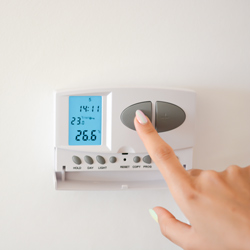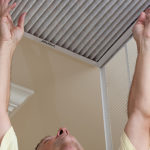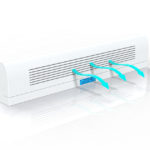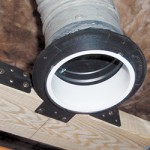 Turn on the news and you’re likely to see a story about extreme weather. Hurricanes, tropical storms, and heat waves have become the norm, not the exception.
Turn on the news and you’re likely to see a story about extreme weather. Hurricanes, tropical storms, and heat waves have become the norm, not the exception.
Which is one reason that air conditioning is such a pressing topic. As temperatures rise in many areas of the world, more people will be looking to cool their homes. They have three options: windows, fans, and air conditioning.
Of course, natural ventilation is the most sustainable, and works well in coastal areas. Fans are next because they use relatively little electricity.
But air conditioners are the most popular and are bound to stay that way. According to Statista, in 2017 60 percent of Canadian households have stand-alone and/or central air conditioning, a rise of 5 percent from 2013.
But air conditioners consume a lot of power and can be an unpredictable cost. They also discharge hot air that can raise outside temperatures, an effect that is especially common in urban areas. In addition, AC systems can consume more than 50 percent of total electricity consumed during extreme heat and put a strain on the electrical grid, something that is likely to become more of a problem in the future. They also exacerbate climate change through direct leakage of hydrofluorocarbons.
Not only will more homes need AC more often in the coming years, but people will be looking to maximize their investment and find the most sustainable (and affordable) system available.
An air conditioner’s effectiveness is determined by how much power it uses (you can check the power rating on the condensing unit), age, condition, layout, design of air ducts, air-tightness, and of course the weather. There are a number of ways to get the most out of an air conditioner while lessening its environmental impact.
Getting the most out of your AC
Turn it up
To use air conditioners in a sustainable way, experts recommend setting them at a relatively high temperature (some say as much as 78 degrees Fahrenheit, or about 25 Celsius; others suggest that even one degree higher will help). This will help the AC run less frequently and use less power, and help form the habit of monitoring the thermostat. Air conditioning power increases for every degree above the temperature outside, so even small adjustments can help.
Use a smart thermostat
A programmable system using an app can ensure that the AC is running only when needed, and that the appropriate temperature is always set. Some thermostats can learn a schedule and program themselves, and most, if not all, are designed with energy savings in mind.
Insulation
The AC won’t have to work as hard if the home is properly insulated. Pipes, ducts, and outlets can be some of the most likely targets requiring extra insulation. Vents in the basement can be closed off as the basement is the coolest part of your home, and the cool air diverted from the basement can be driven upwards into the parts of the house that need it. Ducts and vents should be cleaned regularly (and make sure furniture isn’t blocking them).
Maintenance
Regular AC repair and maintenance is essential to ensure it doesn’t consume excess power and can lead to high energy savings. A blocked AC filter can cause power consumption to spike; regular cleaning will keep costs down (a lightweight filter allows air to flow easily but should be changed every month). Washing outdoor condenser coils (before spring at least) with a garden hose is also recommended.
Retrofit or upgrade
Some parts on old AC units, including vents, condenser fans and compressors, can be upgraded. This is a good bet if the AC is old but still in good shape. If not, a new, energy efficient air conditioner may be the way to go. Better yet, Variable Refrigerant Flow (VRF) systems adjusts to run at what is needed for current conditions. The smart design can even re-use residual heat from the cooling process to provide heat in other parts of the home.



